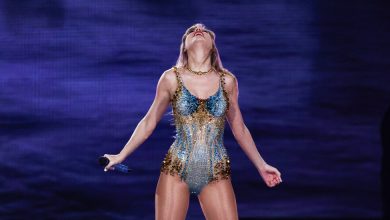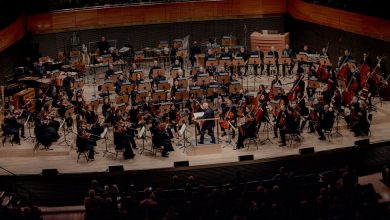Review: After Merce, the Dances Go On, and Go On to Inspire

When a choreographer dies, the survival of the work is always in peril. When Merce Cunningham died, in 2009, the risk felt especially acute. In the tradition of modern dance, the repository of any choreographer’s legacy has usually been a namesake company, but the legacy plan for Cunningham included the disbanding of his troupe, in 2011.
A decade later, the vital signs for that legacy are looking good. Thanks largely to the Merce Cunningham Trust, his dances are still performed widely and well. And his work is alive in another crucial sense: as an inspiration to living dance makers.
That’s the point and purpose of “In Conversation with Merce,” a collaboration between the Trust and the Baryshnikov Arts Center. For a 45-minute virtual program, available free on the center’s website through Sept. 30, sections of Cunningham’s “Landrover” (1972) are followed by two new pieces made in response by Liz Gerring and Kyle Abraham. All sides of the conversation are strong.
“Landrover,” staged by the Cunningham alum Jamie Scott, is performed by Jacquelin Harris and Chalvar Monteiro, both standout members of Alvin Ailey American Dance Theater. That these dancers are Black is notable, since only four Black dancers (all men) were ever in the Cunningham troupe (and never more than one at a time). Their participation here — and with Abraham and other Black dancers in the 2019 Cunningham event “Night of 100 Solos” — is one way that Cunningham’s legacy is posthumously expanding.
And their performances are proof that one need not have been a member of the Cunningham company to dance his work thrillingly well. “Landrover” is full of vertiginous tilts in the middle of turns with one leg raised. Monteiro and especially Harris handle these and other lighting shifts of direction with astonishing clarity and aplomb.
Of the two responding choreographers, Gerring is by far the more obvious choice. As she says in a video introduction to her piece, she’s been “having this dialogue” with Cunningham her whole career: casting former Cunningham dancers, and talking in interviews about an influence that critics like me often point out.
In her new “Dialogue,” performed by Mariah Anton and Cemiyon Barber, the influence is clearer than ever, but the piece is still recognizably Gerring. It’s faster and sportier than “Landrover,” choppier in tempo and texture (a difference heightened by the sometimes overactive editing of Tatyana Tenenbaum, who directed the videos). Gerring takes Cunningham’s tilts and torque and makes everything snap a little harder.
As she notes, in most Cunningham duets “two individuals are very closely tied but remain separate.” Her piece follows this example beautifully, and so does Abraham’s “MotorRover,” as performed by Claude Johnson and Donovan Reed.
In his introduction, Abraham speaks of being inspired by the partnering in “Landrover,” the shapes and balances that require two bodies. But while such complex, complementary arrangements abound in Cunningham’s piece, they’re actually scarce in Abraham’s. And Abraham’s partnering is much more conventional — the dancers holding hands, as in ballet, where in Cunningham the points of contact might be one dancer’s wrist under the other’s elbow, anything but a grip.
The deeper connection between Cunningham and Abraham — and not just here — is an uncommon sense of quiet concentration, of mind-cleansing contemplation. In silence, Johnson and Reed do moves (body rolls, street-language shoulder shrugs) found in no Cunningham dance and gorgeous little sequences (a revolving arm chased by a pivoting head) that Cunningham might have invented but didn’t.
As much as “Dialogue” and “MotorRover” are exercises or homework assignments, they don’t feel forced. They give the phrase “after Cunningham” a hopeful sound.
In Conversation With Merce
Through Sept. 30, digital.bacnyc.org/conversations-with-merce




